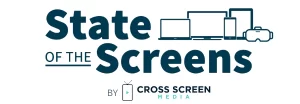We all encounter direct response marketing schemes daily without even realizing what they are precisely, and what they’re making us do.
Direct response advertising is currently the fastest form of creating engagement with audiences. And it’s highly effective! But this marketing strategy doesn’t merely make you aware of a product brand. It makes you subscribe to a service or purchase a product— in an instant!
In this article, we will take a better look at direct response television (DRTV) infomercials and its collaboration with social media.
What is direct response advertising?
First, let’s define this one.
Direct response advertising is the method of enticing prospective audiences to take immediate action on the advertiser’s aim of promoting the product or service. It usually utilizes compelling creatives, promotions, and persuasive call-to-action.
What is direct response television advertising (DRTV)?
DRTV is a marketing strategy that persuades the targeted audience to purchase advertised products right away. The most common form of DRTV is infomercials.
Infomercials are paid informative advertisements in stand-alone TV programs. These advertisements last for as long as 30 to 60 minutes without any interruption. Within the presentation, they entice the audience to complete the act of purchase by calling a toll-free telephone number or going to a direct online store.
Infomercials and Social Media
Infomercials used to dominate the “after-hours” only when the primetime TV entertainments are over. Right now, they still do, but DRTV has done so much better to expand their reach.
It came to a point when infomercials are also presented on-air during the daytime. From there, the DRTV industry went on and took advantage of the growth of social media. This venture has brought success for both brand owners and TV advertisers.
And, there are numbers that prove the efficiency of the collaboration.
As of July 2019, reports on a massive increase in TV spending went out about direct to consumer (DTC) brands reaching beyond social media. Here’s a highlight from the reported statistics:
“Direct-to-consumer (DTC) marketers boosted TV media spending by 60% to $3.8 billion in 2018 from a year earlier as they pursued broader growth following initial investments in social media campaigns, according to a report the Video Advertising Bureau shared with Marketing Dive (TVA Media Group, 2019).”
On a different note, DRTV advertising also created an impact on the age of smartphones and mobile devices. Search queries on newly-emerging brands were reported to have increased when they invested in infomercials. Here are a couple of examples from TVA Media Group:
- “Social fashion seller Poshmark saw search queries jump more than 6,900% on TV spending that rose more than 8,400%.”
- “Among the 63 emerging brands studied, car-sharing startup Turo boosted online video views by about 5,100% on TV spending that rose more than 8,600%.”
In A Nutshell
Apparently, when it comes to leveraging both marketing strategies: infomercials and social media, there’s an inspirational impact that goes both ways. It’s not a matter of “out with the old and in with the new.” This time, traditional meets the modern, and they’re complementing each other in a symbiotic relationship.
Check out how TVA Media Group utilizes multiple media distribution channels to market your product or service in front of millions of potential customers.



